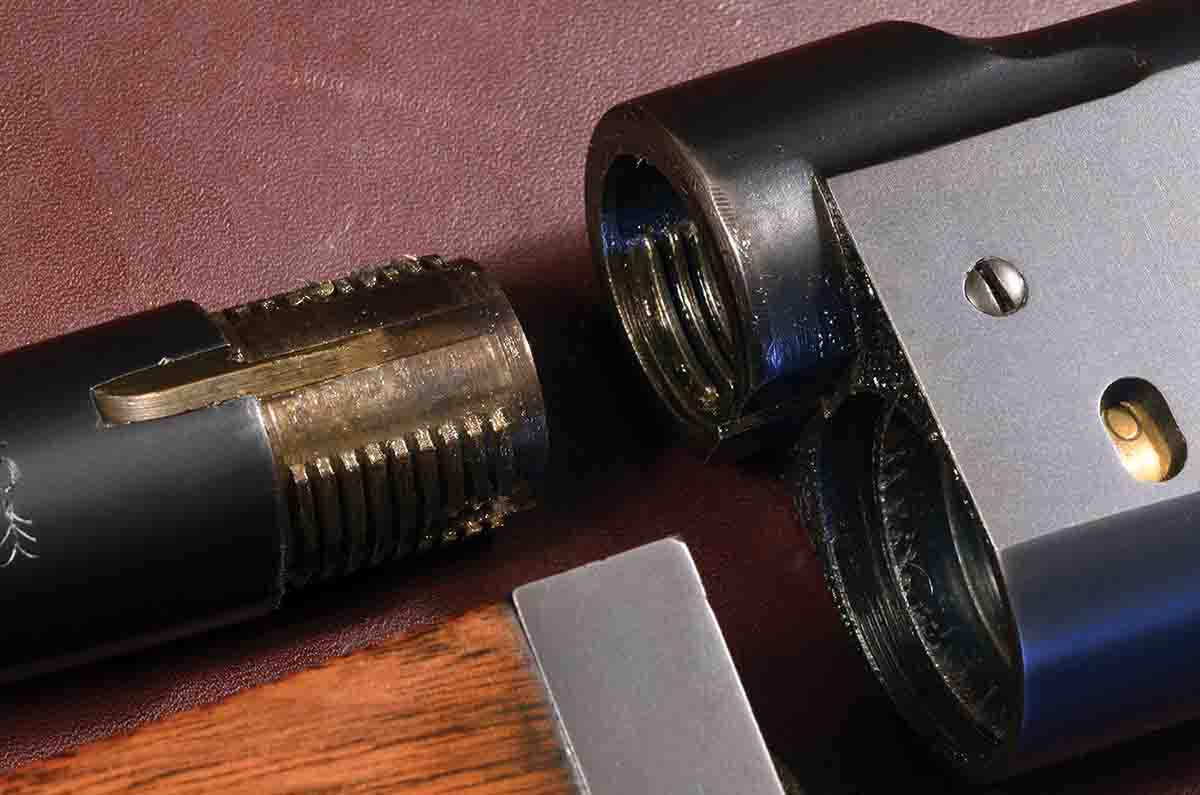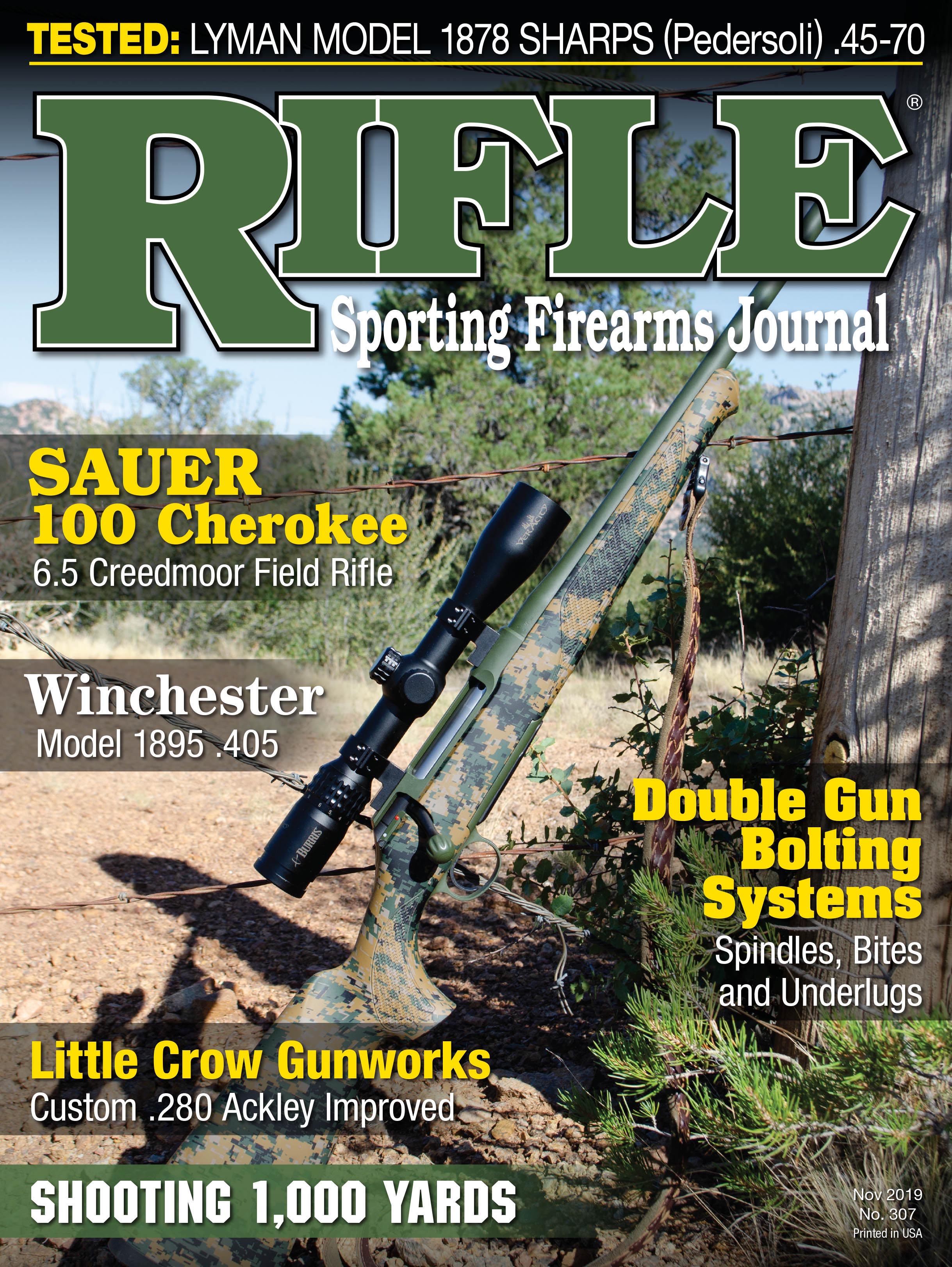Walnut Hill
Ruminations on the Velo Dog
column By: Terry Wieland | November, 19

For city dwellers who could not afford to keep a carriage, transportation choices were limited. Trollies and street car lines were expanding, and of course there were railroads for longer journeys, but otherwise, in and around town it was either travel on foot or acquire a bicycle. Bikes were just being perfected, were highly fashionable and until the motorcar began its ascent were seen as the individual transport mode of the future.
Early in his bicycle-making career, Pope also became interested in rifle shooting and was determined to become proficient. This meant practice, and regular practice required getting to and from the shooting range outside town. Since it was several miles there and back, and Pope’s only practice time was in the morning before he started work, his only option was his bicycle.
If you have never attempted to carry a rifle and all your shooting kit on a bicycle, trust me, it makes a horse look both cooperative and convenient. This problem was not limited to Harry Pope. Through the 1890s and up to 1914, many young men rode bicycles, and many of them were shooters. Both rifle and luggage makers devoted considerable attention to making rifles that were easily transportable and providing bicycle-friendly gear to carry them in.
The most obvious innovation was the takedown rifle – one with a removable barrel that would fit into a much shorter case. Harness makers then created leather scabbards to hold the two pieces. These were attached to the bicycle crossbar. Additional equipment was accommodated in a backpack, basket or saddle bags.
Major companies that routinely offered takedown rifles included Winchester, Marlin, Savage and Stevens. Takedowns were not just small-caliber target or boys’ rifles, either; big-game rifles such as the Winchester 86 and the Savage 99 had takedown models. Of course, these were not made just for bicycles. Compact leg-of-mutton cases were more easily carried and fit readily into luggage racks on trains. These were generally made of hard leather and protected the rifle better than a soft case intended for bicycles. The latter were often made of canvas, if the old ads are anything to go by.
Today, the takedown rifle of the 1890s is regarded as a curiosity by most shooters. They are widely condemned as inaccurate, or at least less accurate than their solid-frame counterparts. On the other hand, they command a premium on the collector market, especially if they are in good original condition.

Bicyclists of times past faced many problems. They were accused of frightening the horses that were pulling the carriages of the well-to-do, and then as now, when the well-to-do start whining, lawmakers listen. Some householders would loose their dogs on two-wheeled passers-by. Dogs that like to chase things took to bicycles like ducks to water, and this included packs of feral dogs that occasionally roamed the streets.
In Europe, gunmakers produced pistols intended to be carried by bicyclists and used on attacking canines. Today, if you shot a dog that was chasing your bicycle and barking, you would end up in court, but those were more pragmatic times. Even special cartridges were created for the purpose.
Since the first publication of Cartridges of the World in 1965, a favorite trivia question for shooters has been, “What is the 5.5mm Velo Dog?” Answer: a centerfire .22, slightly less powerful than the .22 Long Rifle, introduced in 1894 by a Paris gunsmith specifically to discourage over-enthusiastic bicycle chasers. Revolvers were chambered for it in Belgium and Germany, and ammunition was produced in the U.S. by both Remington and Winchester until 1940. The Velo Dog got its name from “velocipede,” an early type of bicycle, and velo became a generic term in several languages for bicycles of all kinds. Dog was, well, dog. Presumably, in Paris it was the Velo Chien.
The 5.5 Velo Dog achieved a minor burst of celebrity in the 1930s when Charles Askins was a top pistol competitor. Since any centerfire cartridge could be used in the middle ground centerfire category between the .45 Auto and the .22 rimfire, Askins reasoned he could get an edge if he came up with a revolver with less recoil than the .38 Special. He discovered the 5.5 Velo Dog and was in the process of having a target revolver made when his superiors in the U.S. Border Patrol let it be known that they would frown on such underhanded methods.
Carrying a gun and attempting to shoot it from a moving bicycle was not for everyone, obviously, and another approach was called a “dog whip.” These were broad, flat pieces of thick leather, or several pieces laminated together, two to three feet long. They were used by pedestrians as well as bicyclists, and while their usefulness on wild dogs is questionable, they became a favorite for dealing with cads, bounders and other subspecies of Victorian humanity.
Where some men carried a walking stick, others carried a dog whip. One such was Adolf Hitler when, in his Bohemian phase in the 1920s, he sported disheveled hair, a wild look and an old brown overcoat. Hitler’s dog whip became as much a personal badge in Munich society as Neville Chamberlain’s umbrella became, also in Munich, a decade later.
Speaking of Germany, in Alte Scheibenwaffen, author Jesse Thompson reports that Schützen shooters, faced with carrying a 14-pound rifle and another 20 to 30 pounds of equipment, hopping on and off trollies and trains to get to far-flung matches, often had a takedown rifle with a removable barrel. These were commonly available, albeit at extra cost.
“Every American gun ‘expert’ worth his salt knows that take-down rifles are less accurate,” Thompson wrote, “And while German shooters of the 19th century might not know as much about accurizing rifles as our ‘experts’ do today, we may be certain that, with 400 years’ experience shooting at targets, they were not totally ignorant on the subject.
“Since German shooters accepted this disadvantage and paid extra for the privilege, do you suppose that take-down rifles are not all that inaccurate?”
With the passing of the bicycle as a dominant adult mode of transportation in the 1920s, the popularity of takedown rifles declined in America and most were discontinued. As a feature of firearms, it lives on only for break-action shotguns, double rifles and a few single shots – and the latter are never noted for their accuracy.
It’s questionable if this criticism is really valid, however. In my experience, when a takedown rifle delivers hideous accuracy, it’s because of some other problem, like a bent barrel, not because the lock-up has become worn and sloppy. I’ve never owned a takedown Winchester or Marlin, but in the case of the Savage 99, its interrupted-thread system remains remarkably tight even a century later.
The Stevens 44- and 44½-actioned rifles of 1894 to 1915 were all takedowns, in fact if not in name, and they were famous for their accuracy. Accurate enough to satisfy Harry Pope, at any rate, who signed on with Stevens in 1901 to oversee the company’s drive to become number one in the accuracy game. Some authorities credit him with designing the 44½, and if he thought its takedown feature was inherently inaccurate, I suspect he would have had nothing to do with it – regardless of his sympathy for fellow bicycling target shooters.


